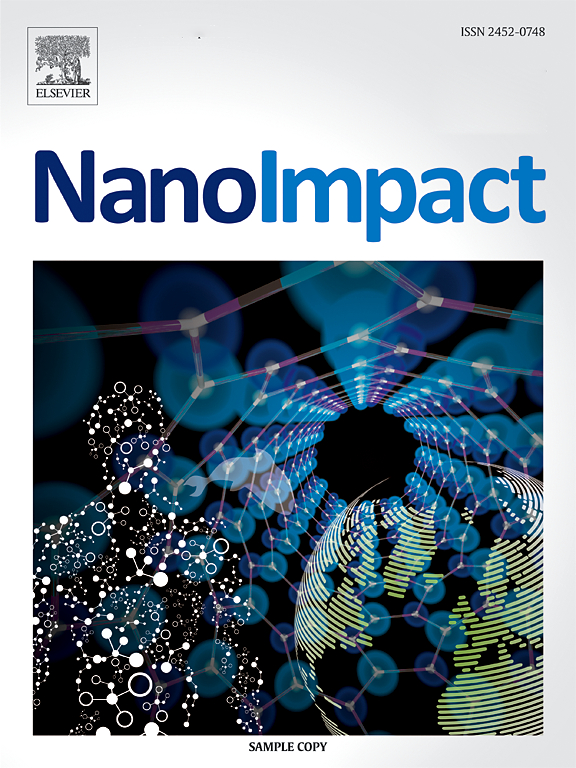Death-driven exposure: Necrotrophic transfer of polylactic acid and polystyrene microplastics alters biochemical architecture in the saprophagous insect Chrysomya megacephala
IF 5.5
3区 环境科学与生态学
Q2 ENVIRONMENTAL SCIENCES
引用次数: 0
Abstract
Microplastic exposure (MPs) represents an emerging threat to terrestrial ecotoxicology, particularly within detritivorous ecosystems. In this study, we investigated transstadial bioaccumulation and the biochemical effects of necrotrophic exposure to polystyrene (PS-MPs) and polylactic acid microplastics (PLA-MPs) in Chrysomya megacephala. Mice contaminated with varying concentrations of the polymers were used as larval decomposition substrates. To confirm the prior internalization of MPs, third-instar larvae (L3) were analyzed, revealing significant particle accumulation. We assessed MP retention and biochemical alterations in key physiological systems following adult emergence. The presence of MPs in newly emerged adults, at significantly lower concentrations than those observed in larvae, confirmed transstadial bioaccumulation and indicated partial retention during metamorphosis. Bioaccumulation was more pronounced at higher exposure concentrations. PS-MPs induced functional disorganization, characterized by increased reactive oxygen species (ROS), lipid peroxidation, proteolytic activity, and neuroendocrine dysfunctions. In contrast, PLA-MPs elicited more coordinated biochemical responses, with emphasis on antioxidant activation. Correlation network and functional trade-off analyses revealed distinct patterns of physiological reorganization between treatments. At the same time, trend tests and causal inference confirmed concentration-dependent effects and a direct association between exposure and biochemical dysfunction. The data suggest that necrotrophic exposure constitutes a functional pathway for MP redistribution in terrestrial environments, exerting systemic effects even in the absence of direct adult contact.

死亡驱动的暴露:聚乳酸和聚苯乙烯微塑料的坏死性转移改变了腐生昆虫大头金蝇的生化结构
微塑料暴露(MPs)是对陆地生态毒理学的新威胁,特别是在营养性生态系统中。在这项研究中,我们研究了坏死性暴露于聚苯乙烯(PS-MPs)和聚乳酸微塑料(PLA-MPs)在大头金体内的生物积累和生化效应。被不同浓度的聚合物污染的小鼠作为幼虫分解的底物。为了证实MPs的优先内化,对三龄幼虫(L3)进行了分析,发现明显的颗粒积累。我们评估了成虫羽化后关键生理系统的MP保留和生化变化。新出现的成虫体内MPs的浓度明显低于幼虫体内的浓度,证实了跨体表生物积累,并表明在变态过程中存在部分滞留。在较高的暴露浓度下,生物积累更为明显。PS-MPs诱导功能紊乱,其特征是活性氧(ROS)、脂质过氧化、蛋白水解活性增加和神经内分泌功能障碍。相反,PLA-MPs引发了更协调的生化反应,重点是抗氧化激活。相关网络和功能权衡分析揭示了不同处理之间不同的生理重组模式。同时,趋势测试和因果推理证实了浓度依赖效应和暴露与生化功能障碍之间的直接联系。数据表明,坏死性暴露构成了陆地环境中MP再分配的功能途径,即使在没有直接成人接触的情况下也会产生全身影响。
本文章由计算机程序翻译,如有差异,请以英文原文为准。
求助全文
约1分钟内获得全文
求助全文
来源期刊

NanoImpact
Social Sciences-Safety Research
CiteScore
11.00
自引率
6.10%
发文量
69
审稿时长
23 days
期刊介绍:
NanoImpact is a multidisciplinary journal that focuses on nanosafety research and areas related to the impacts of manufactured nanomaterials on human and environmental systems and the behavior of nanomaterials in these systems.
 求助内容:
求助内容: 应助结果提醒方式:
应助结果提醒方式:


